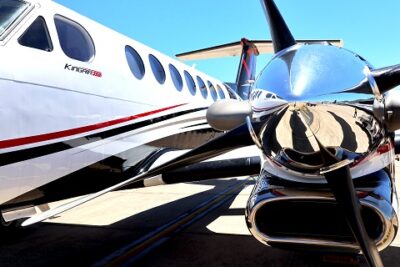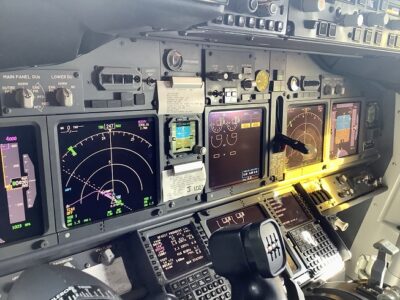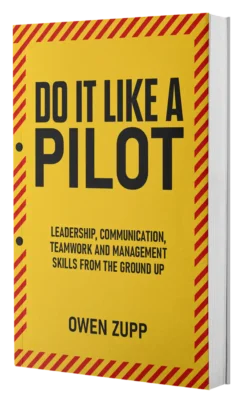In Aviation – Check Your Ego.
In Aviation – Check Your Ego.
I was told early in my aviation journey that when you think you know it all, you are dangerous. Flight itself is not inherently dangerous, but it can be brutally unforgiving and cracking the door open to complacency is an invitation to fate. Other than being a successful military recruiting tool and good fun to watch, the movie “Top Gun” in many ways displayed the qualities that were the antithesis of the professional pilot – particularly when it came to ego.
A professional in any field should be confident, but that confidence stems from a sound foundation of knowledge and experience – not false bravado. Arrogance and a bristling ego can be the defence mechanisms of those that lack those qualities. Like a termite-ridden shack that’s given a shining coat of paint, it may look great, but you do not have to push too hard to realise that there is nothing underneath.
The issue is not that these individuals are annoyingly the loudest person at every party – it’s far more serious than that. Their behaviour negatively impacts communication, decision-making, planning and a raft of other processes. Processes that could be result in improved efficiency and safety if they checked their ego and encouraged others to participate. A subdued ego is not a sign of weakness, rather it is an indicator of quiet self-confidence. Admitting mistakes is not a sign of incompetence, it reinforces that no-one is infallible and that the first step to any solution or degree of improvement is identifying the problem.
Displaying humility will earn respect from colleagues and subordinates alike. It will also open the channels of communication, inviting feedback from the entire team. Arrogance will discourage this behaviour, either from fear of ridicule, retribution or being ignored. Some will even take pleasure in remaining silent, allowing the offender to openly fail. And herein lies the issue – the task suffers.
A flight crew’s goal is to safely and efficiently convey their passengers to their destination. It is not about point-scoring as one pilot watches the other fail or demonstrating superior prowess over another. It is about operating as a team to achieve the goal and this applies equally in business.
As a leader it is important to not be dismissive. Always listen to others and be genuinely attentive as their suggestion may be worthwhile and even when it isn’t, it is an opportunity for learning. The simple act of pausing and listening to a more junior employee raises their spirits, self-respect and encourages future input. In the flight deck environment, typically a captain and co-pilot may fly “leg for leg”, meaning that they will alternate between being the pilot actually flying the sector and operating in a support role. That is, one takes-off, flies and lands, while the other monitors the operation, takes responsibility for radio transmissions, flight logs, etc, etc. It is an important technique as it not only shares the load, but it offers each crew member firsthand insight into both roles on a regular basis. For the co-pilot, it is an opportunity to operate the aircraft as if they are in command and the best captains make the most of this opportunity. And they do so by shelving their ego.
In this scenario, a co-pilot may suggest an alternative way of planning an arrival, or possibly suggest the carriage of more fuel than the captain may think necessary. As a captain and a leader, it’s important to take the plan on board and if it isn’t too far from the mark, allow the plan to go ahead. Interfering and imposing one’s own plan doesn’t offer the opportunity to learn. If there is a shortfall in the co-pilot’s strategy, it will be more effectively reinforced through execution than being overruled beforehand. Additionally, more than one captain has learnt a valuable lesson from a co-pilot, by shelving their ego. The junior party can also be guilty of ego – it is not an elite club. If it’s a case of over-confidence, then the tasks set for the co-pilot or employee can increase in their challenge until a degree of humility is drawn out naturally. This should not be an “I told you so” moment for a captain or manager, rather a technique to draw out the best through the subordinate reaching the realisation on their own.
Another far from desirable situation that can occur when the co-pilot’s ego gets in the way is known as “withdrawing support”. This may originally have been provoked by an over-zealous captain or some other issue that offended the co-pilot, however, the flight deck is not the place for escalation. In the case of “withdrawing support”, the offending co-pilot doesn’t interfere with the operation, they just fail to support the captain. And in instances when they should draw oversights to the captain’s attention, they remain silent with a smug “let them work it out” attitude. It is an exceedingly rare and dangerous situation and if detected must be addressed as soon as possible. The first indicator is a reduced level of verbal input other than what is absolutely necessary. As in any relationship, faltering communication can be a “red flag” for a greater underlying issue. A leader’s job is to encourage feedback both good and bad. The absence of any feedback can be an indicator by stealth that the communication and the relationship is breaking down with the task ultimately suffering.
There is no room for exercising an ego in the workplace – particularly when it’s a cockpit. It raises unseen barriers where the constant transfer of information and respect should take place. It can escalate a situation when egos collide or subdue one party when an imbalance exists. Neither situation is the best for the overriding priority of completing the task and achieving the goal and it will always be greater than any one individual.








